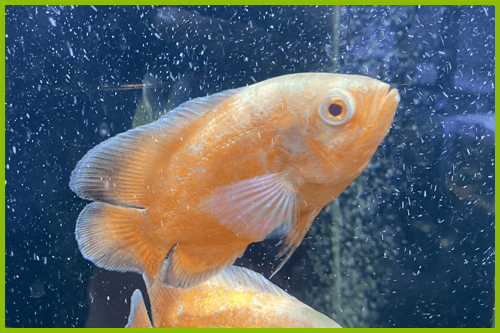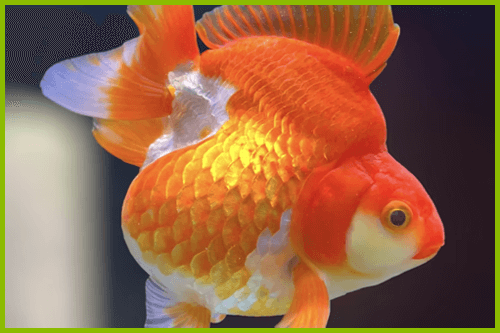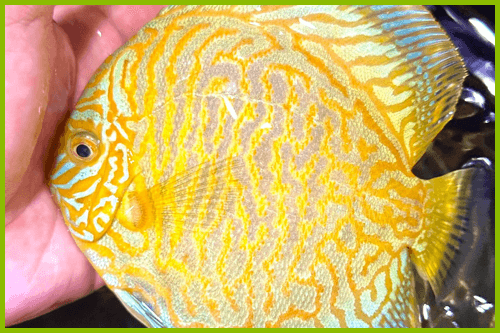Here's How to Deworm Discus Fish Effectively in 10 Days or Less
Vincent explains the symptoms of worms, how to deworm your Discus, and the pros and cons of Levamisole and natural heat treatment.
Keeping Discus fish healthy isn’t just about clean water and a balanced diet — it also means protecting them from internal parasites that can silently harm them.
Deworming Discus fish regularly is one of the most important steps in ensuring their long-term health and vibrant appearance.
In this guide, we’ll cover everything you need to know, from identifying Discus parasites, understanding the signs of infection, to the best Discus worming treatments, such as Levamisole for fish and natural methods.
Understanding Worm Infections in Discus Fish
Discus parasites, particularly internal worms, are more common than most aquarists realise. These pests can enter your aquarium in many ways:
- Through live or frozen foods that haven’t been properly sterilised
- From newly purchased fish that haven’t been quarantined
- Via contaminated equipment or plants
Once inside, worms can multiply quickly, feeding on the fish’s nutrients and causing serious health issues. Common types include:
- Camallanus worms: visible red worms protruding from the vent of the fish
- Nematodes: microscopic worms that cause internal damage
- Tapeworms: flatworms that absorb nutrients from the fish’s gut
Left untreated, these parasites can lead to severe weight loss, reduced immunity, and even death. That’s why Discus internal parasite treatment should be part of your regular fish care routine.
With the right Discus dewormer or Discus wormer, you can eliminate these pests before they become a major problem.
Signs Your Discus May Need Deworming
Knowing when to use a Discus worming treatment is crucial. Early action can make the difference between a full recovery and losing your fish.
Here are some clear signs your Discus may be suffering from internal parasites:
- Noticeable Weight Loss
Even with regular feeding, an infected fish may become thin, especially around the head area, giving it a “pinched” or triangular appearance when viewed from the front. This is often a key indicator for deworming Discus fish. - Bloated or Sunken Belly
Some worms cause a fish’s stomach to be bloated, while others make the belly appear sunken due to nutrient loss. Either extreme can signal the need for a fish dewormer. - White, Stringy Faeces
One of the most common signs of Discus parasites is long, white, thread-like feces hanging from the vent. This symptom almost always requires treatment. - Reduced Appetite or Refusal to Eat
When worms affect the digestive system, your fish may stop eating entirely. A prompt Discus treatment can help restore appetite and prevent further decline. - Lethargy and Isolation
Infected Discus often become less active, prefer hiding, or may separate themselves from the group. This is a strong behavioural sign that it’s time to deworm the fish.
💡 Tip: If you notice more than one of these symptoms in your tank, start planning a Discus internal parasite treatment immediately. The earlier you act, the better the chances of saving your fish and preventing spreading to others.
Discus Worming Treatments You Can Use
When it comes to deworming Discus fish, there are 2 main approaches that experienced aquarists recommend:
- Using a proven Discus Dewormer like Levamisole for fish
- Or a Natural Method, such as heat treatment.
The best choice depends on the severity of the infestation, your tank setup, and the resources available.
a. Levamisole for Fish: The Proven Discus Dewormer
If you’re looking for an effective and widely trusted Discus wormer, Levamisole for fish is one of the best options.
It works by paralysing internal worms such as nematodes and Camallanus, allowing them to be expelled naturally without harming your Discus or the beneficial bacteria in your filter.
Why use Levamisole aquarium treatment?
- Safe for use in planted tanks and community aquariums
- Does not damage your biofilter
- Works quickly and effectively against a range of Discus parasites
- Easy to dose and apply in a whole tank treatment
Step-by-Step Levamisole Discus Worming Treatment (3-3-3 Method)
Day 1–3:
- Dose at 1 mL Levamisole per 7 L of aquarium water (or follow product instructions).
- Turn off lights and remove activated carbon from the filter, as light and carbon can reduce the effectiveness of the treatment.
- Keep aeration strong and maintain a stable temperature.
- Leave the treatment in the tank for 72 hours.
Day 4–6:
- Perform a 70–80% water change.
- Vacuum the substrate to remove dead worms and waste.
- Do not add any new fish or feed heavily during this period.
Day 7–9:
- Repeat the same Levamisole dosage as Day 1.
- Maintain the same conditions: lights off, no carbon filter, stable temperature.
- This second round ensures that any newly hatched worms are eliminated.
Day 10:
- Perform another large water change (70–80%).
- Clean the substrate again.
- Restore normal lighting and replace activated carbon in the filter.
💡 Tip: While Levamisole is an excellent fish dewormer, always monitor your fish during treatment. If you notice extreme stress, perform a partial water change immediately.
b. Heat Treatment: A Natural Discus Parasite Treatment
Raising the water temperature can be an alternative for those looking to deworm fish naturally. This method works by creating conditions lethal to certain parasites but tolerable for Discus.
How to apply heat treatment for Discus worming:
- Increase temperature gradually to 35–36°C (95–96.8°F) over several hours.
- Maintain this temperature for 4–5 days.
- Keep strong aeration, as warm water holds less oxygen.
- Only use this method in a Discus-only tank — other fish species may not tolerate the heat.
While this approach can be effective for mild infestations, it may not eliminate all Discus internal parasites, especially in heavy infections. Many aquarists combine it with a fish deworming medicine for the best results.
Step-by-Step Guide: How to Deworm Discus Fish
Whether you’re using Levamisole for fish or another trusted Discus wormer, following a clear process ensures the treatment is safe and effective.
Here’s a simple step-by-step guide for deworming Discus fish in a home aquarium:
1. Prepare a Quarantine Tank (Recommended)
- Treat your Discus in a separate tank whenever possible to avoid stressing other fish.
- A quarantine tank also makes it easier to control conditions during Discus parasite treatment.
2. Remove Activated Carbon and Turn Off Lights
- Activated carbon will absorb the fish deworming medicine, making it ineffective.
- Light can also break down certain medications, like Levamisole aquarium treatments.
3. Dose Levamisole or Your Chosen Discus Dewormer
- For Levamisole: Use 1 mL per 7 L of water or follow the instructions on the product.
- Add the treatment evenly across the tank to ensure full coverage.
4. Maintain Stable Conditions for 72 Hours
- Keep aeration strong, temperature stable, and avoid heavy feeding.
- This is especially important in the first stage of Discus internal parasite treatment.
5. Perform a Large Water Change and Clean the Substrate
- After 72 hours, remove 70–80% of the water.
- Vacuum the bottom to remove dead worms and waste.
- This step is essential to prevent re-infection.
6. Repeat the Treatment
- After 3–4 days, repeat the same dosage and conditions.
- This second round of Discus worming treatment targets any parasites that may have hatched after the first treatment.
7. Final Water Change and Return to Normal
- Another large water change is performed on the final day (Day 10 in the Levamisole 3-3-3 method).
- Restore normal lighting and replace activated carbon.
- Observe your fish for signs of improvement.
💡 Tip: If you prefer how to deworm fish naturally, heat treatment can be used in mild cases, but for serious infections, a proven fish dewormer like Levamisole offers the highest success rate.
How Often Should You Deworm Discus Fish?
There’s no one-size-fits-all answer to how often you should use a Discus worming treatment. It depends on your tank setup, feeding habits, and whether you regularly introduce new fish.
General Recommendation
For most aquariums, deworming Discus fish every 3–6 months is a safe and effective routine. This schedule helps prevent parasites from reaching a population size that could harm your fish.
When to Deworm More Frequently
You may need to use a Discus dewormer more often if:
- You feed live or frozen foods regularly, as these can introduce Discus parasites
- You frequently add new fish without a proper quarantine period
- You’ve had a recent outbreak and want to prevent recurrence
When to Delay Deworming
Avoid worming fish during extreme stress, such as after transport, major tank changes, or unstable water parameters. Treating during stress can make recovery harder.
💡 Tip: Even if your fish appear healthy, routine Discus internal parasite treatment acts as a preventive measure, much like regular health check-ups.
Preventing Worm Infections in Discus Fish
While knowing how to deworm Discus fish is important, prevention is always better than a cure. By following good aquarium practices, you can reduce the risk of introducing Discus parasites and minimise the need for frequent Discus worming treatments.
- Quarantine New Fish
- Keep new arrivals in a separate quarantine tank for at least 2–4 weeks.
- This allows you to monitor for signs of internal parasites before adding them to your main tank.
- If necessary, you can also use this time to perform a preventive deworming fish treatment.
- Maintain Excellent Water Quality
- Stable, clean water reduces stress, which in turn helps your fish resist infections.
- Perform regular water changes and check parameters weekly.
- Good water quality supports recovery if you ever need a Discus parasite treatment.
- Feed High-Quality, Safe Foods
- Avoid live foods from uncertain sources, as they are a common way to introduce Discus internal parasites.
- Rinse frozen foods thoroughly before feeding.
- Consider garlic-soaked pellets or gel foods for a natural immunity boost (how to deworm fish naturally approach).
- Clean Equipment and Decorations
- Nets, siphons, and decorations can transfer parasites between tanks.
- Disinfect them between uses, especially after treating a tank with fish deworming medicine.
- Regular Health Checks
- Observe your Discus daily for early symptoms like white stringy faeces, bloating, or unusual swimming behaviour.
- Prompt action allows you to apply a Discus wormer or fish dewormer before the problem spreads.
📌 Remember: Prevention not only saves your fish from illness but also saves you time, money, and the stress of emergency treatments.
Conclusion
Keeping your Discus healthy means staying proactive about their care. Whether dealing with a mild case of Discus parasites or a severe infestation, knowing how to deworm Discus fish effectively can make all the difference.
Using a proven Discus worming treatment like Levamisole for fish is one of the safest and most effective ways to eliminate internal worms. Pairing it with good prevention practices, such as quarantining new fish, feeding high-quality foods, and maintaining water quality, will help you avoid future outbreaks.
Remember:
- Early action saves lives
- Prevention is always easier than cure
- The right fish dewormer can restore your Discus to full health and vibrant colours
Disclaimer:This is a guide only. OZ Discus is not liable for any losses and holds no responsibility in the event of the death of the fish. Users of this guide are to use the information at their own discretion and accept all risks resulting from the use of this guide.
Looking for More Expert Tips? Or the Discus Collection in Australia?
Explore more fish care articles, ask us questions, or browse our collection.
👉 Explore Fish Care Articles
👉 Shop High-quality Ornamental Fish
Shop OZ Discus
Visit our Live Fish Explorer and discover our premium Discus fish for sale.
We import our fish from the best farms and breeders around the world to ensure that you have the highest quality Discus for your fishkeeping journey.










